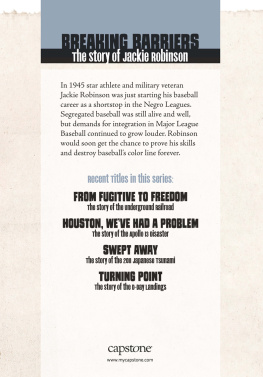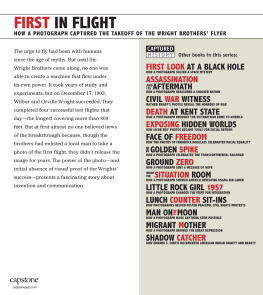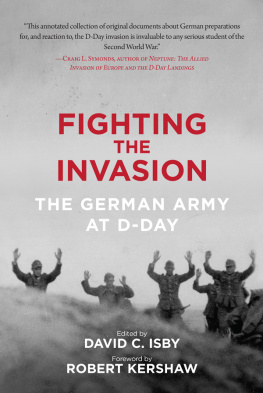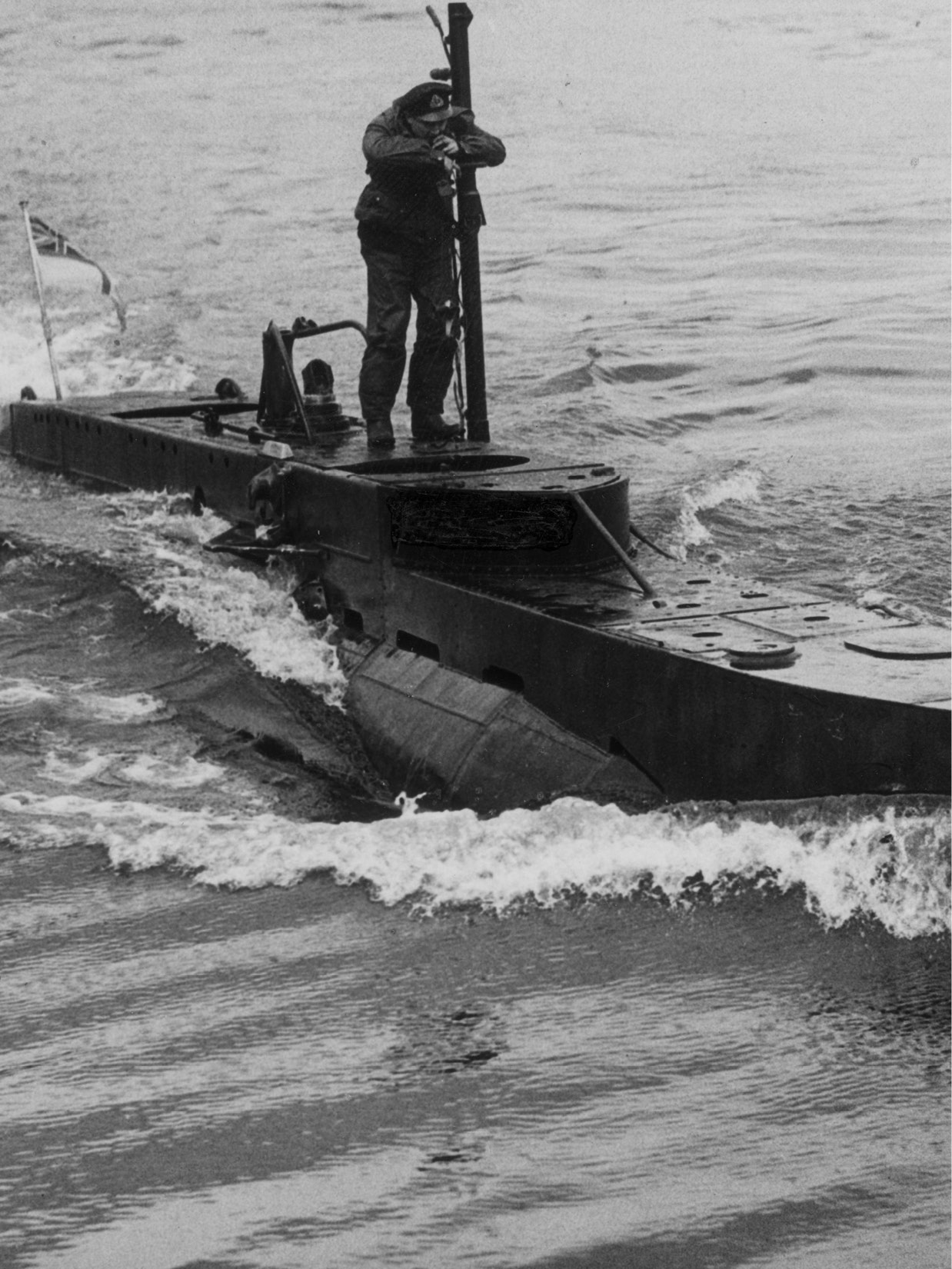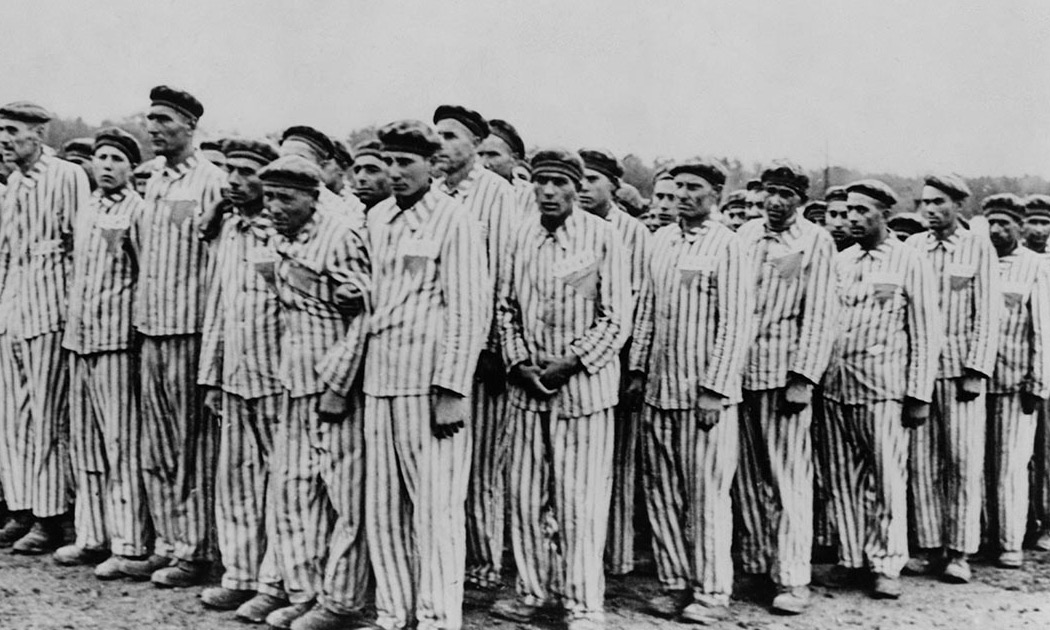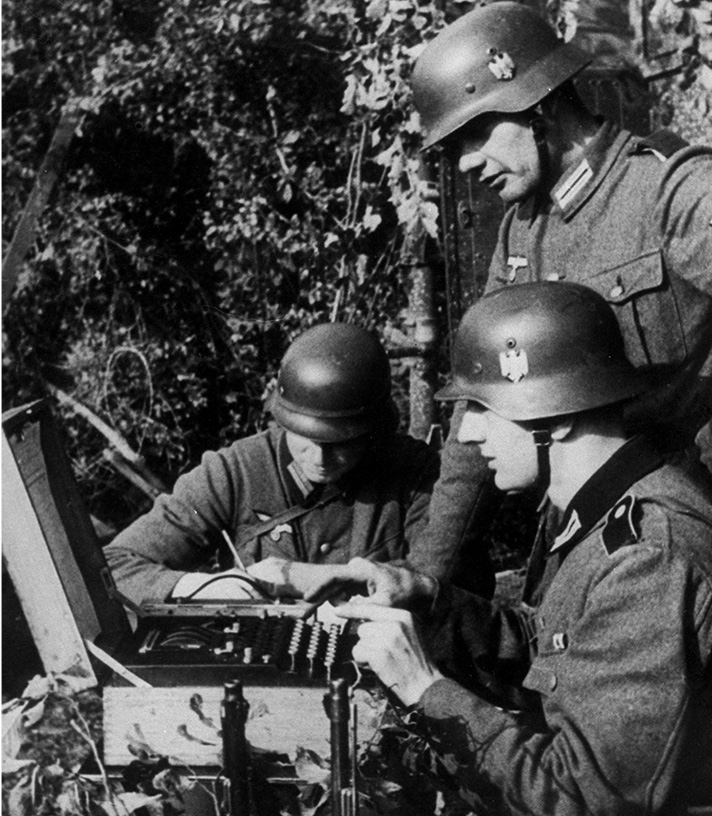CHAPTER 1
PLANNING AN INVASION
W ith a storm tossing the seas, a tiny British submarine came to the waters surface off the coast of Normandy, France. It was late evening on June 5, 1944, and the minisubs five-man crew was tuning its radio to receive a assault ever attempted.
The captain of an X-class minisub stands on deck giving orders to the crew just three weeks before the D-Day invasion. Minisubs played a key role in the attack.
The radio message came through; the attack was on. X23 returned below the waters surface to avoid being detected by German ships or soldiers on land.
In the late 1930s, Germany had invaded large parts of Europe, including France. The amphibious assault planned for Normandy was designed to push the Germans out of the lands they had conquered and bring an end to World War II (19391945).
The crew of X23 and another British minisub waited throughout the night. They had orders to surface again early on the morning of June 6. At that time, they would help guide British troops and tanks ashore, playing a key role in what the world knows today as D-Day.
A DREAM OF CONQUEST
World War II had started with Germanys concentration camps. As he conquered countries across Europe, Hitler sent millions of European Jews to these camps. Some of the camps were death camps. By the time World War II ended, the Germans had killed more than 6 million Jewstwo-thirds of the entire Jewish population in Europe at the time.
Prisoners at concentration camps were given very little to eat. Two men in front are holding up a friend who is too weak to stand on his own.
Hitler also imprisoned non-Jewish people across Europe. Some were his political opponents. Others were from religious groups he didnt like. And some were imprisoned simply because they were physically or mentally disabled.
Great Britain and France declared war on Germany on September 3, 1939. These and other nations that fought Germany were called the Allies. The joined the Allies in June 1941. Germany and the countries that supported it, including Italy and Japan, were known as the Axis Powers.
At first, the United States did not send troops to the war front. After World War I, many Americans did not want to take part in another European war. Congress even passed laws that limited when the United States could help other countries at war. However, President Franklin Roosevelt saw the danger Hitler posed to the people of Europe and their freedom. In 1940 he convinced Congress to give the Allies weapons and military supplies.
The war finally came to the United States on December 7, 1941. On that day, waves of Japanese planes attacked U.S. naval ships stationed at Pearl Harbor in Hawaii. The next day, the United States declared war on Japan. On December 11, Hitler declared war on the United States. In the blink of an eye, the United States had been pulled into the deadliest war the world had ever known.
SEEKING A SECOND FRONT
By the end of 1941, Germany had conquered 11 countries in Europe, including France, which had surrendered in June 1940. A year later Germany launched an invasion of the Soviet Union. The fighting between the Germans and Soviets affected large parts of Eastern Europe, and the Soviets suffered heavy losses. The fighting in the east became the major European battlefront.
Soviet Premier Operation Overlord. Today, it is known as D-Day, which is a term used to describe a day on which an important event is planned.
PREPARING FOR OVERLORD
The Allies chose U.S. General Dwight D. Eisenhower to command the troops that would invade France. He had helped train troops during World War I. In 1942 and 1943, he commanded U.S. troops that fought in North Africa and Italy.
General Dwight Eisenhower commanded the troops at Normandy and later became president of the United States.
Eisenhower received orders from the Combined Chiefs of Staff in February 1944 which said, You will enter the continent of Europe and undertake operations aimed at Germany and the destruction of her armed forces. By early 1944 Eisenhower had nearly 3 million troops under his command. About half were American. The rest were mostly British and Canadian.
Leading up to D-Day, the Allies worked hard to deceive the Germans. They created fake plans for invading Norway, which Germany also controlled. They also wanted it to look like the attack would come at planes.
German spies who had been caught in England also helped the Allies. They agreed to work for the Allies rather than go to prison or be executed. These double agents helped spread false information about where the attack would occur and the size of the Allied forces.
ULTRA AND ENIGMA
The Allies had one way to measure how successful they were in deceiving the Germans. The Germans used a machine called Enigma to send coded messages, and the codes used changed daily. But in 1941 British mathematician Alan Turing was able to crack the code. Experts and an early computer helped Turing break Enigmas code and read the messages. The British called the information they gathered this way Ultra. By some estimates, cracking the Enigma code helped shorten the war by two years.
Just before D-Day, the Allies learned the location of some underwater land mines the Germans had planted. With this information, the Allies could tell that the Germans believed the false information they had sent out.
German soldiers used the Enigma machine to send coded messages.
During the buildup for Operation Overlord, the Allies kept their real intentions a secret. They built new airfields across England to use for the invasion. They hid supplies of ammunition in remote areas and brought in thousands of tanks and other vehicles. By May 1944
CHAPTER 2
APPROACHING D-DAY
E isenhower did not pick the date for Operation Overlord by chance. Weather, the tides, and the phases of the moon all played a part in the decision. Originally, the operation was planned for May, which would give the Allies more time to carry out their invasion during the warm summer months. Plus, Eisenhower knew that the Germans were building up their defenses along the Atlantic Coast in France to try to stop an amphibious invasion. Launching the attack in May would give them less time to do so.
However, Eisenhower decided to wait until June because he needed more time to build up the largest force possible for the attack. He decided the attack would come between June 5 and June 7. Those three days offered the best combination of a late-rising full moon and low tides. The late-rising full moon would give the first wave of troops more time to operate under darkness. The low tide would help the small landing craft carrying troops ashore avoid any obstacles the Germans had placed near the coast.




